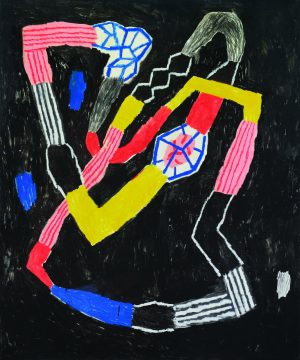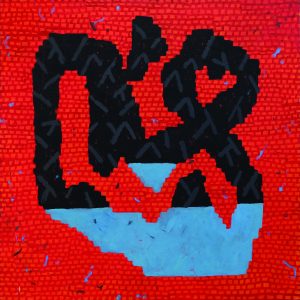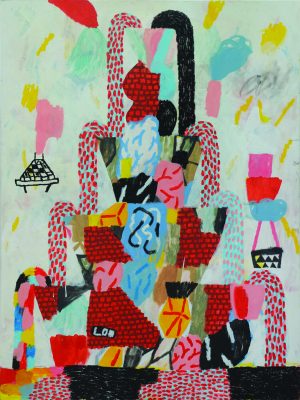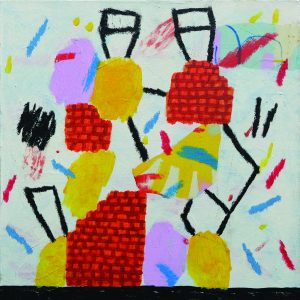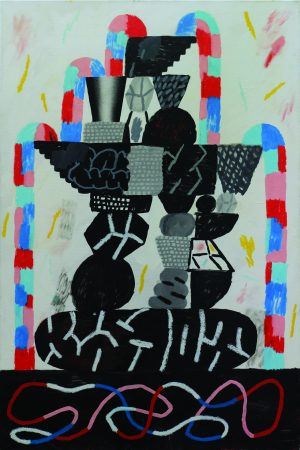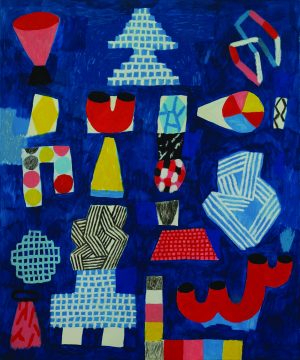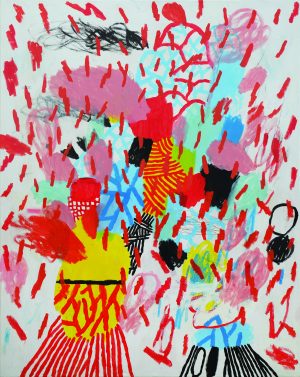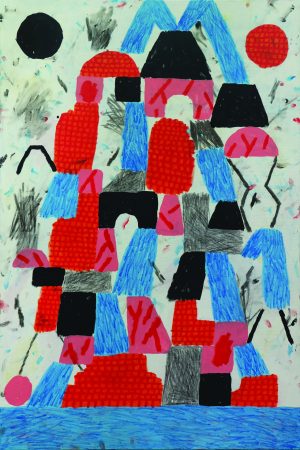
Balázs SZABÓ LOBOT
10 x 10
- Year(s)
- 2022
- Technique
- acrylic, oil pastel on canvas
- Size
- 90x90 cm
Artist's introduction
Balázs Szabó Lobot is one of the emblematic figures of the street art scene of Pest, which emerged after the turn of the millennium. His painting is defined by a naive character similar to children’s drawings, and is inspired by graffiti. Szabó, born in Nagykanizsa, graduated from the Hungarian University of Applied Arts in 2005 after a short detour in Ljubljana. His career as a member of the street art group named 1000% was defined by ephemeral, anonymous, street visuals. Hence the stage name "Lobot", which he used later on. Achieving great success in the genre, 1000% has regularly appeared in contemporary exhibition institutions that were open to street art, but Szabó has also exhibited his own autonomous artworks in Budapest. His art world was defined by a spontaneous fusion of graffiti and comics, by a style reminiscent of the Basquiat of the 80s, combined with an Eastern European DIY-spirit. His visual narratives are permeated by the experiences and objects of the underground music scene (mixing desks, synthesizers, posters, etc.), often embodied as objects. Around 2020, his painting moved closer to the abstract language, but retained its naive, children’s drawing-like character – often reminiscent of crayon drawing because of the oil pastel and oil stick. Brick grids, coiled strands, tubes and circles are snaked in front of a neutral space or stacked as building blocks. The playfully composed works, which tend towards non-figurativity, sometimes contain fragments of motifs from earlier pictorial narratives mixed with hidden symbols of fresh experiences. Szabó lives and works in Budapest. Besides his autonomous fine art and street art works, he is also known as an applied graphic artist and as a VJ. Gábor Rieder
More artworks in the artist's collection »

